Why did I make just one sandwich? Because these wild mushrooms were so good that I ate a lot of them right out of my skillet! But this one sandwich? Oh yeah, it's good!
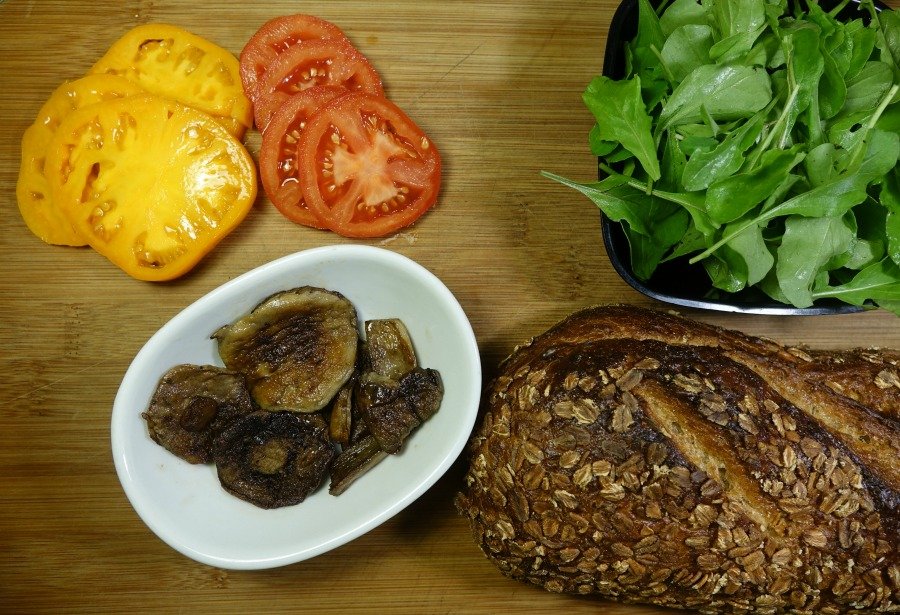
The Culinary Challenge says that our entries should have "sustainable ingredients". Their definition is "ingredients that are available everywhere and could grow or last for the whole year". My definition of a sustainable food is one that fits in with nature and doesn't require a lot of energy or habitat destruction to produce.
For this recipe, both definitions sort of match up. Slippery Jack mushrooms (Suillus luteus) grow just about anywhere that there are pine trees (Pinaceae family). And that covers a lot of territory! I'll write other posts that focus on the details of identifying Slippery Jacks and cooking with them in other recipes.
And my other sandwich ingredients are pretty basic. I found one growing in the wild, the other from my garden, and one from the store. So let's get started with this great sandwich.
1. Pick some Slippery Jacks
I picked my Slippery Jack mushrooms in my backyard. They first started popping up a couple years ago, after I planted an Eastern White Pine (Pinus strobus). The two have a symbiotic relationship, where each one benefits from each other -- like all of us here on Steemit!
Now the Slippery Jacks have spread to other conifers, too. So there are a lot more of them this fall. And I can pick all that I want, because these mushrooms are just the fruit of the fungus, like an apple from an apple tree. That's sustainability!
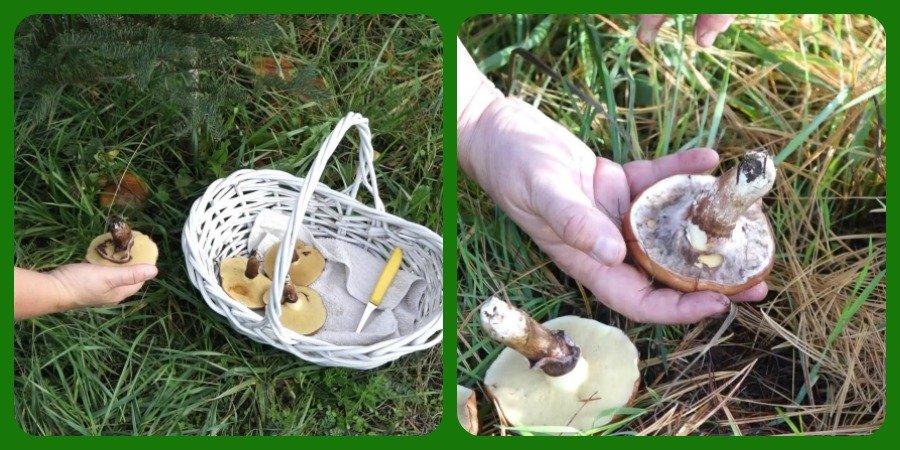
2. Clean those Slippery Jacks
Slippery Jacks are all slimy, slippery, and sticky on top -- how did you think they got a name like Slippery Jacks? So they can be messy. The best approach, for cleaning and good eating, is to peel their caps. In fact, you pretty much need to peel them, even if you find clean ones. Word on the street is that the peels cause stomach distress. I've never tested that - I just peel them. It's easy enough.
On Slippery Jacks that are looking a little old, with large, dark pores under the caps, I remove the pores. But I picked these when they were young. Some hadn't even opened up all the way. So I left the pores on. I cut the stalks off, flush with the cap. I peeled the stalks and sliced them in half, to cook them, too.
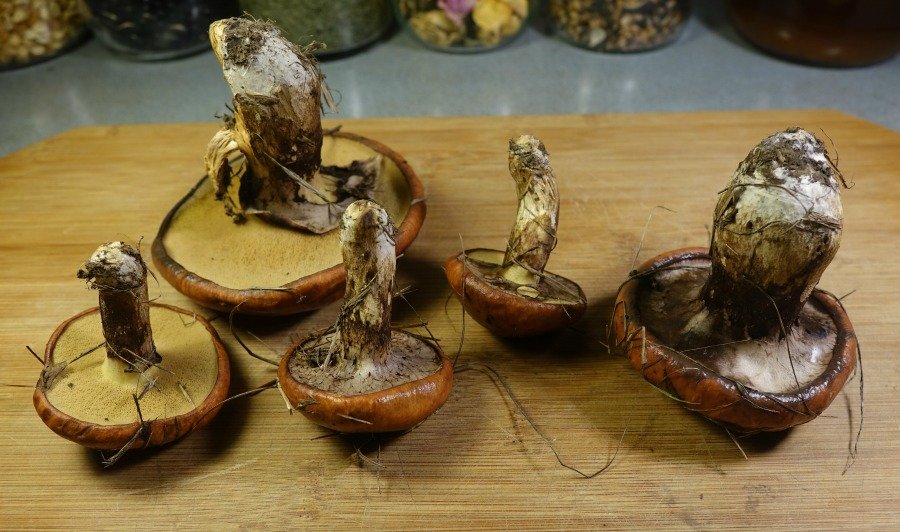
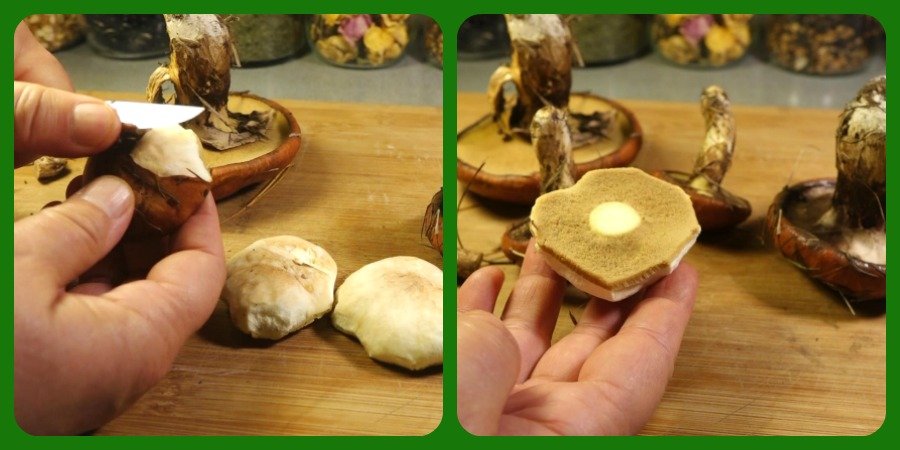
3. Cook those Slippery Jacks
To cook the Slippery Jack caps, I dry-sauteed them. That means I got my cast iron skillet up to a high heat, added the mushrooms, and turned the heat down to medium. There's no oil, no liquid, no spices - nothing in the pan except the mushrooms.
Slippery Jacks hold a lot of moisture, so this cooks their liquid out. It shrinks them up, too! The before and after photos show how much they shrink. I turned them over to cook on each side. Once the mushrooms have cooked down to a firm consistency, I added a little butter and salt to brown them.
Here's where the risk comes in. Those Slippery Jacks are tasty now. Make that sandwich fast, before you eat all the Slippery Jacks right there from the skillet.That's the voice of experience talking!
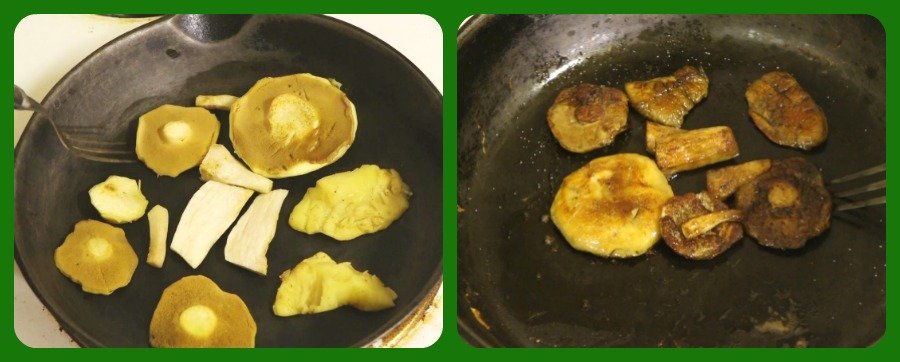
4. Stack those Slippery Jacks
This isn't a complicated sandwich. I sawed off a thin slice from a crusty loaf whole grain bread. I laid down a bed of wild arugula sprouts fresh-picked form my yard. Any tasty wild greens would be good here and increase the sustainability of this sandwich.
I laid down a few slices of homegrown tomatoes. Yes, it's November and I have fresh, ripe tomatoes that I picked over a month ago. I'll write a post about how to do that sometime soon, too. It's great having fresh tomatoes for a few months after the last summer harvest - and not having to buy tomatoes that have been trucked here from far away.
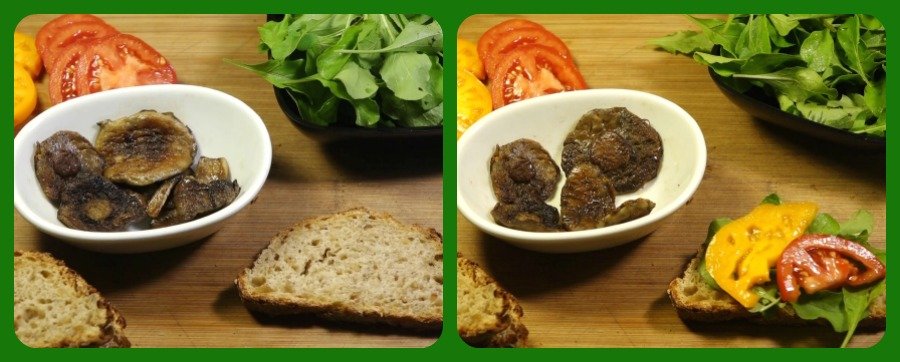
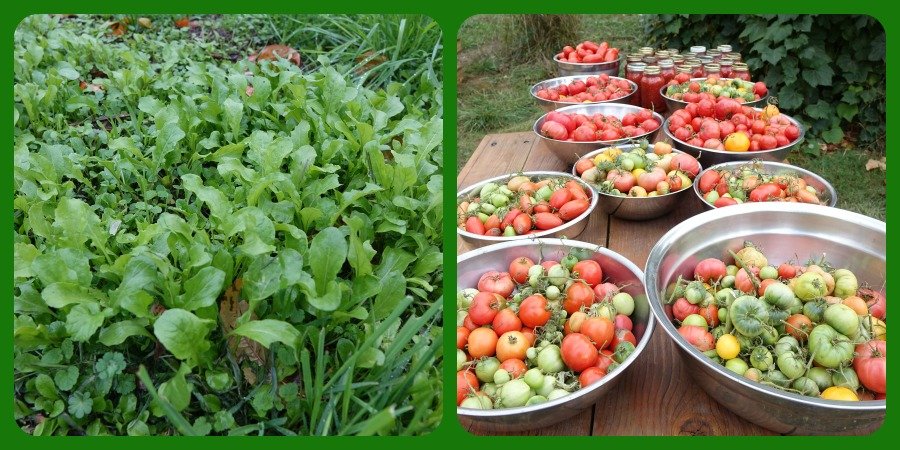
Then I stacked those Jacks. That's it. This is a open-faced sandwich in the Scandanavian style that @katharsisdrill wrote about the other day, here: Rye-bread and the Amagermad. I'll admit, this sandwich isn't big enough for a whole meal -- but it's raining again today. I'm hoping there will be more Slippery Jack Sandwiches in my future! And yours, too, if you learn to know and appreciate the sustainable Suillus luteus like I do.
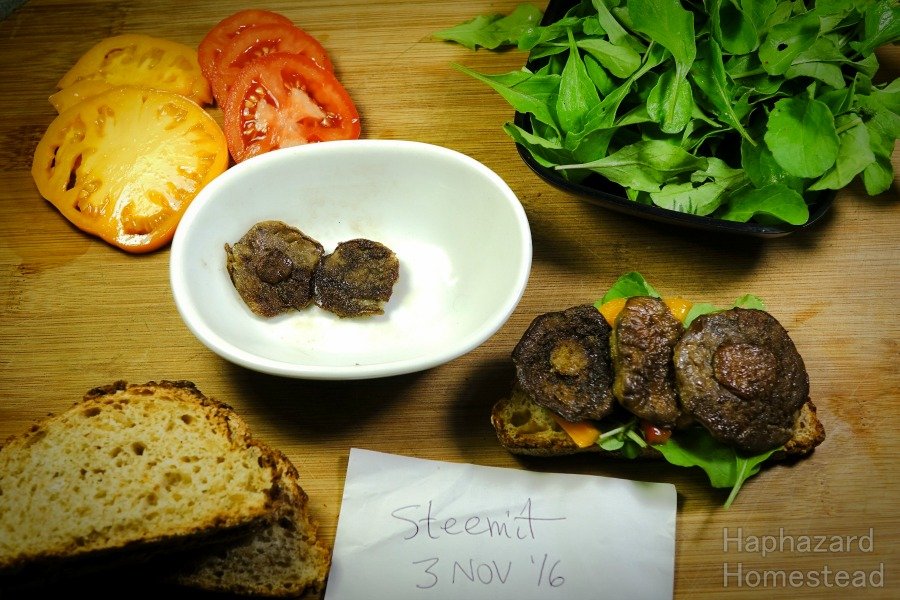
What Do You Think?
Have you ever seen or eaten Slippery Jack mushrooms? What are your thoughts on sustainable foods or eating wild mushrooms? I would like to know!
And if you have any thoughts about foraging, or experiences to share, write a post a be sure to use the Foraging tag. See what other folks are foraging by following the @foraging-trail, where all posts are SteemTrail-curated. Happy Foraging!
** Haphazard Homestead **
*** foraging, gardening, nature, simple living close to the land ***
All content is 100% Haphazard Homestead - photos and all!
I participate in Operation Translation. All my posts are available for translation under the rules listed on the linked post from @papa-pepper. Logo provided by @oepc85. Post goes 100% to Steem Power! Logo provided by @merej99

*** foraging, gardening, nature, simple living close to the land ***

